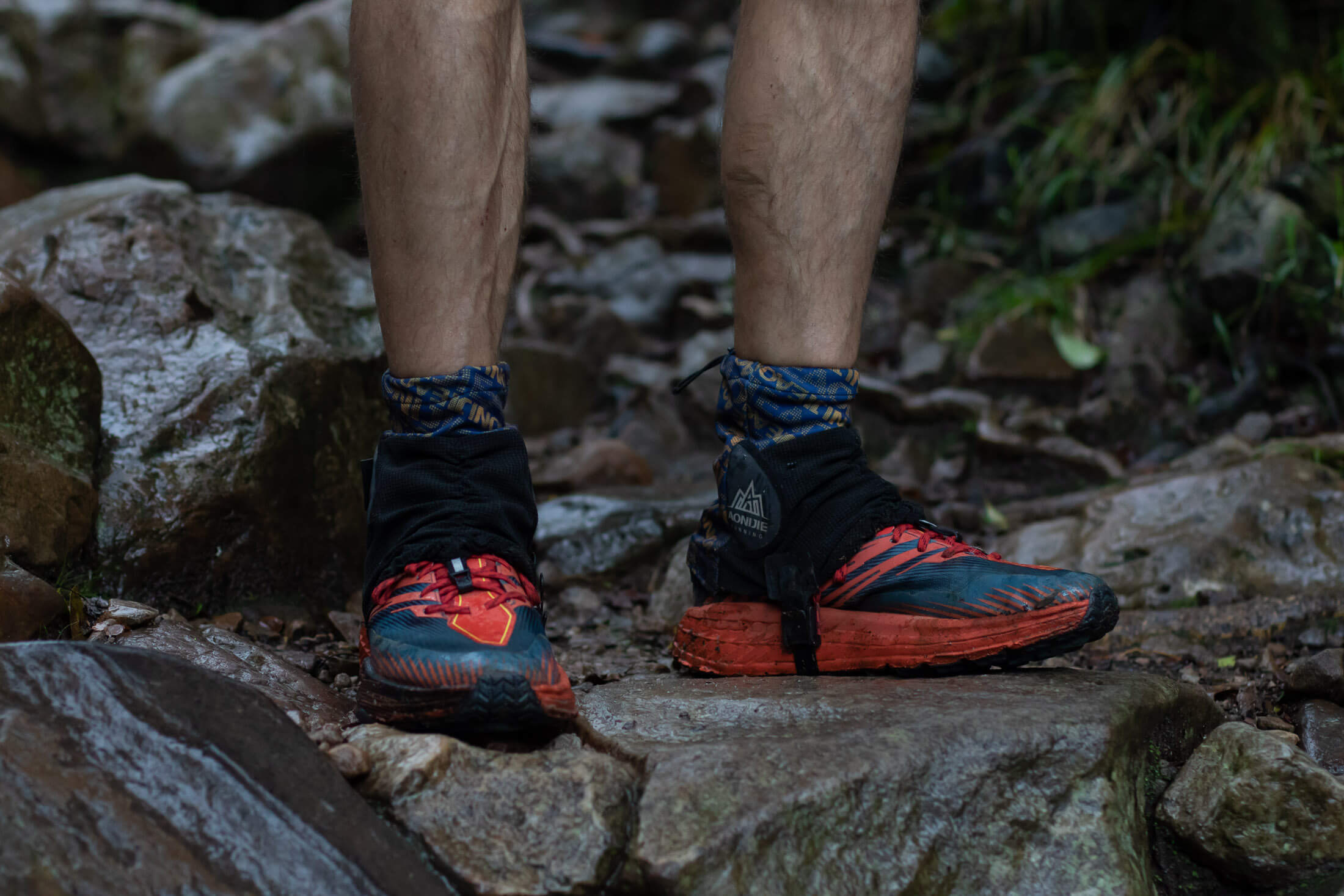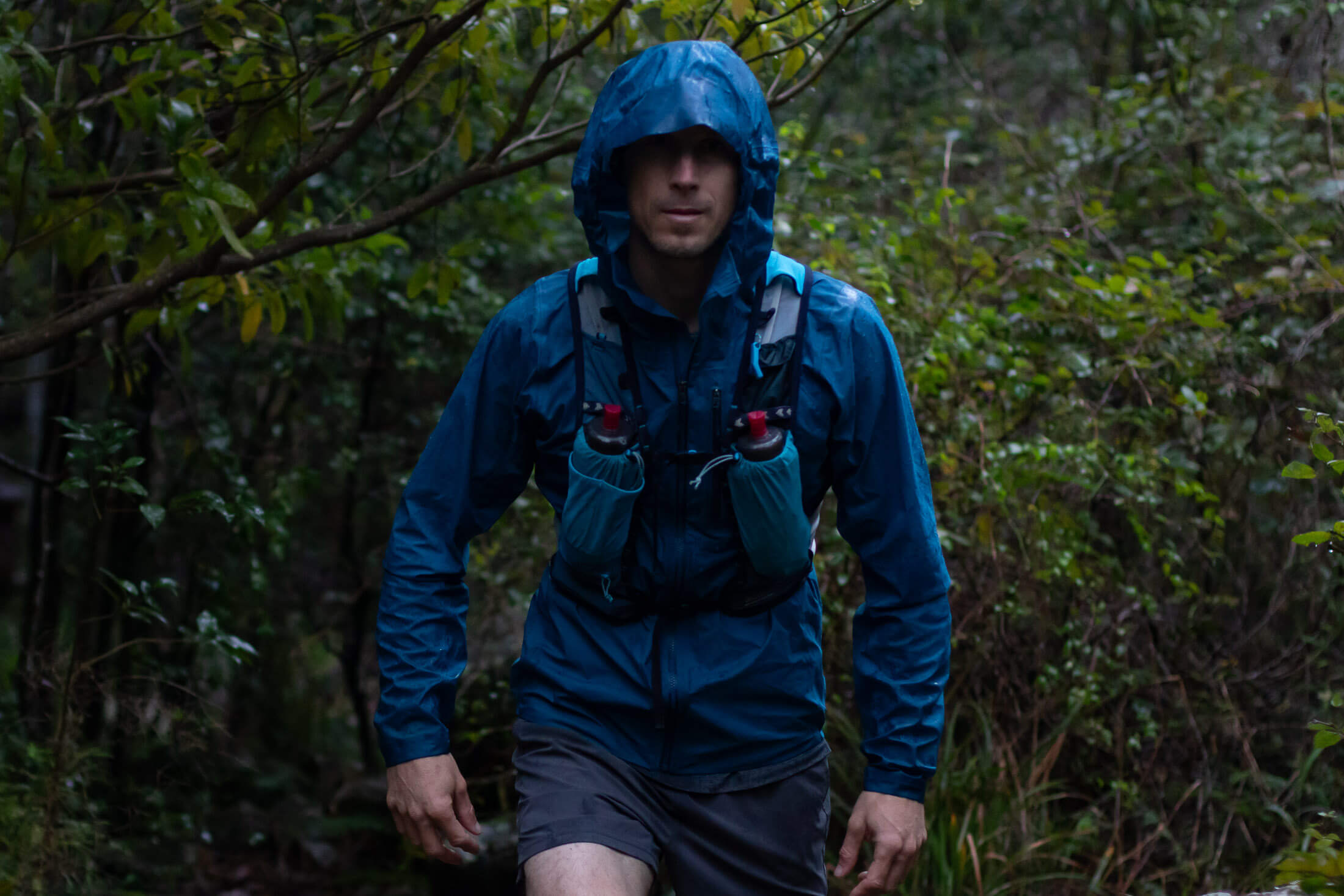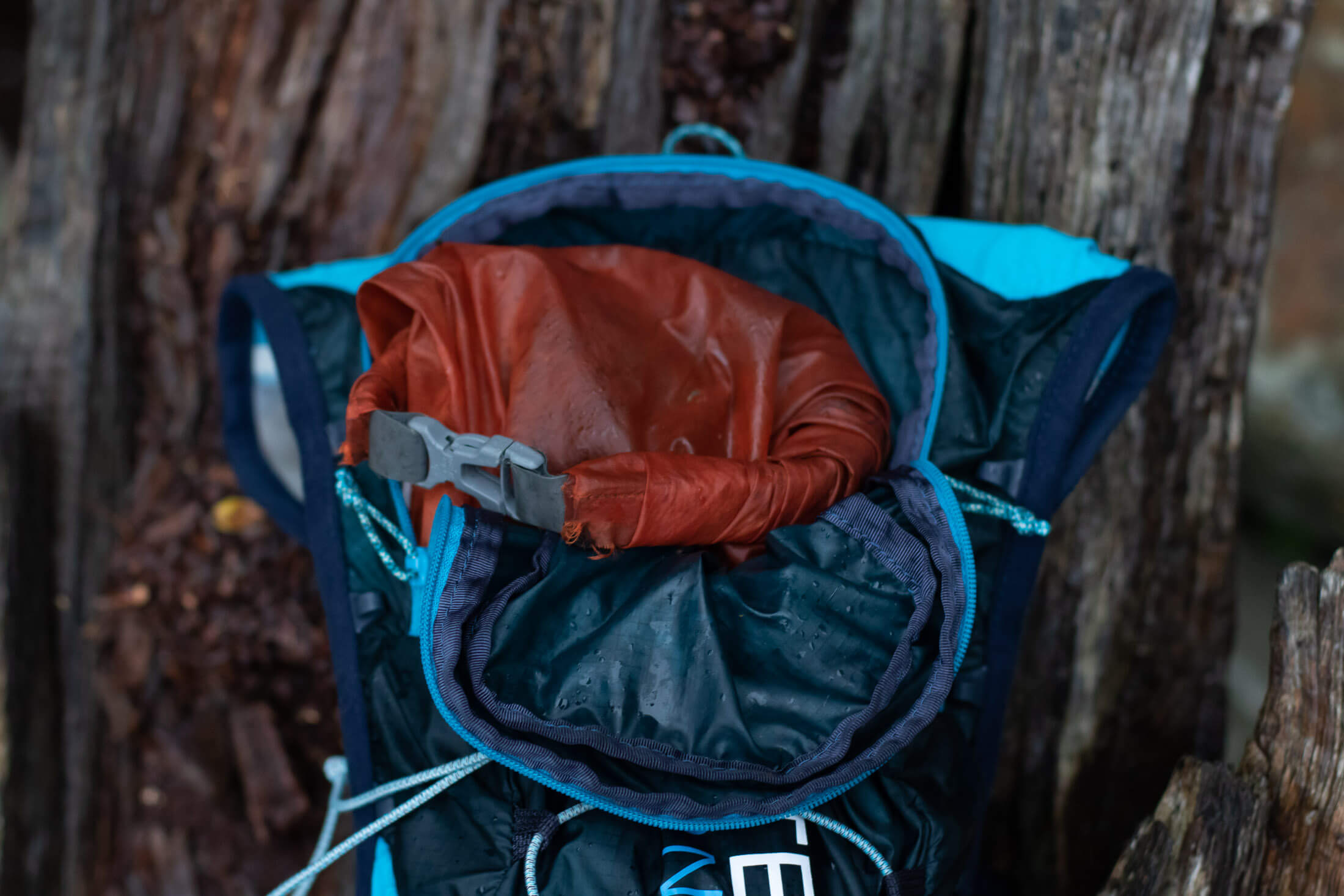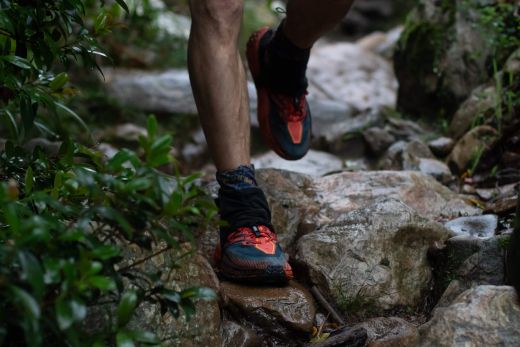When it’s cold and wet outside, it’s all too easy to put off going for a run. But that would mean missing out on a uniquely rewarding experience. Besides helping you to hit your mileage targets, the rain and solitude (you’ll only see other committed runners out on the trail) can add a sense of adventure to what would otherwise be a routine run. As for being cold and wet, you don’t have to be miserably uncomfortable. With a little preparation and the right gear, you can stay reasonably dry and warm regardless of what mother nature throws at you. The following nine pieces of kit are mandatory for any truly muddy mission.
Waterproof shoes
There are two approaches to choosing footwear for running in the rain. The first is to wear regular non-waterproof shoes that drain and dry quickly. With this approach your feet will get wet, but then your shoes won’t hold much water, and you won’t have to go to lengths to step around puddles. The second approach is to wear waterproof shoes (typically GoreTex). If you can keep your feet dry using this strategy, that’s great. Your feet will be warmer and less likely to get blisters. On the other hand, if water does get into waterproof shoes, they will take a lot longer to drain and dry out. This is not the solution if the trail is going to be very wet and you’re going to be splashing through puddles. The other thing about waterproof shoes is that you have to wear gaiters with them to stop water from getting in through the top.
Gaiters
Waterproof shoes aren’t very useful if rain still gets in through the top, as can happen in sustained rain. To keep water from getting through the tongue and ankle collar, you’ll need to equip your shoes with waterproof gaiters. Waterproof running gaiters typically go only as high as the lower shin and weigh as little 2.6 ounces (75 grams), so they don’t add much weight. When choosing a pair, make sure that they work properly with your shoes and that they fit snuggly around your lower leg. The cuffs on your gaiters should clear your socks to ensure that the latter don’t stick out and wick water straight down into your shoes. Given how these three pieces of kit have to work together, it’s best to choose them at the same time.

Socks
It’s never good to run in clothes made of cotton. But this is especially true when it starts raining. Cotton retains water and has almost no insulating properties when wet. It’s no surprise then that it’s a contributing factor in many cases of hypothermia. Bottom line – don’t skimp on your socks. Only buy quality technical socks made from merino wool or some kind of synthetic fabric that can help wick away moisture. In recent years, waterproof socks have also become a thing and worth considering, especially if your goal is to keep your feet completely dry. Typically, waterproof socks have 3 layers with a waterproof-breathable membrane sandwiched between two softer fabrics. The idea is that the membrane keeps out water while the outer layers protect the membrane, wick away moisture, and ensure next-to-skin comfort.
Pants
In warmer temps, there’s nothing wrong wearing your regular shorts or tights and just getting wet. However, in colder conditions, you will need waterproof running pants to prevent a properly frigid experience. Waterproof running pants will have taped seams and a hydrostatic head rating of 10,000. Ideally they will also have ankle zippers so that they are easy to take off mid-run if you have to. Water-resistant running tights can also be a good cold and wet weather option if your runs are going to be under an hour and the rain isn’t going to be heavy. Whatever you do, just remember that cotton is never a good choice for active wear but especially when it’s wet outside – and that applies to your underwear as well.
Running jacket
Light running jackets vary widely in terms of water resistance, breathability, and durability. To stand up to sustained rain, you will need a jacket that is waterproof (at least 10,000 HH) not just water resistant. Lightweight waterproof jackets like those designed for running typically have a 2.5-layer construction with a DWR face fabric bonded to a breathable-waterproof membrane. The 0.5 layer is a protective coating on the inside of the membrane. This is designed to help prevent the membrane from getting clogged with sweat and oil, thereby filling a similar role to the mesh lining in 2-layer jackets. Like all rain jackets, waterproof running jackets also have to have taped seams to stop water from getting through between the panels.

Waterproof gloves
When the temperature drops, you’ll often feel it in your hands first. That’s why I also carry a pair of waterproof gloves with me on cold and wet runs. In my experience the best waterproof gloves have a synthetic outer layer, a membrane middle layer to prevent the transmission of moisture, and a merino wool inner layer for insulation. Unlike shell-type gloves which can feel a bit crinkly, these knitted waterproof gloves are very comfortable and offer a great level of dexterity for the protection they offer. I use Dexshell Thermfit gloves, but Sealskinz (who also make waterproof socks) also make a knitted waterproof glove called the Anmer.
Cap
A hat won’t keep your head dry in constant rain, but it will stop rain drops from dripping into your eyes. Even if you are not a contact lens wearer, this can be pretty annoying. A trucker cap is generally best for this purpose as it can be worn under your jacket’s hood. Worn this way, your hat (most of it) will stay dry, and your face will be shielded from rain and water dripping off the rim of your hood. If it’s very windy and a cap doesn’t work, a buff is your next best option as it can at least stop water from running down your forehead and into your eyes. One note on trucker caps, it’s best to choose one with no foam in it. This would only act as a sponge and soak up water.
Pack or vest liner
Most running packs and vests are made from light non-waterproof material which will do little to stop your kit from getting wet in sustained rain. To keep the contents of your pack dry, you will need to put them into a small dry bag. This will need to be waterproof, not water-resistant, and roughly the same size as the compartment that it’s going into – 3 to 5 liters in the case of most running vests. These waterproof bags typically have roll-top closures but can vary in terms of the material they’re made from (with some being thicker than others). Because your dry bag will act only as a lining, it doesn’t need to be particularly durable. A lightweight dry bag like that made by Sea To Summit will suffice.

Waterproof case or pouch for your phone
Most modern smartphones offer a level of water resistance, but if you know you are going to get properly wet, it’s advisable to put your phone in some kind of waterproof pouch or case. Products designed to protect your phone from water typically fall into one of three categories: rugged cases like the OtterBox Frē Series, Neoprene pouches (zippered or with velcro closures), and plastic pouches that have a sliding seal system and transparent touch-compatible front window. The latter are the most waterproof and the most bulky while hard cases and neoprene pouches offer lower levels of water-resistance. While these first two options probably won’t save your phone if you fall in a river, they will keep it dry in a downpour.
Get more advice from this gearhead
That’s it – everything you need to make running in the rain just that much more enjoyable. But don’t stop here. On this website you’ll find many more in-depth gear guides on everything from trail shoes to running vests as well as many more how-to articles. You can find these under the different sections in the categories menu, or, better yet, sign up for my newsletter to get all the latest from Trail & Crag delivered straight to your inbox.
